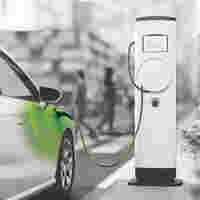Demand- and Supply-side Management:
WAGO’s Dynamic Load Management can help reduce costs for both demand- and supply-side energy management. They can either be implemented independently or in parallel with each other. Both approaches reduce the energy demand at the grid connection point, allowing for peak shaving.
Demand-Side Management: The goal is to decrease demand by reducing energy consumption to prevent usage spikes and using WAGO’s Dynamic Load Management system can dramatically limit the power allocated to EV charging based on the number of vehicles and the time of day.
Supply-Side Management: With WAGO’s Dynamic Load Management, configure the system to utilize local power sources (i.e. photovoltaic systems, battery storage, etc.) during peak hours to reduce high-demand electricity charges from the utility company








